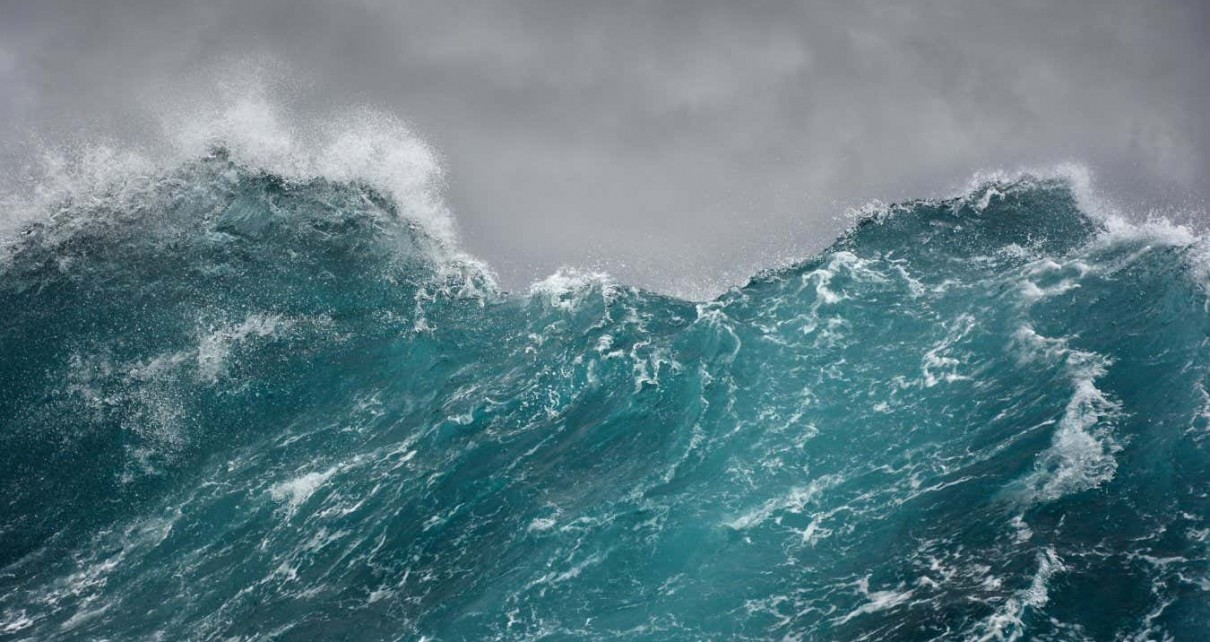[ad_1]

Seawater could be a limitless source of hydrogen, but we need electrolysers that can handle the high salt concentration
Shutterstock/andrejs polivanovs
The following is an extract from our climate newsletter Fix the Planet. Sign up to receive it for free in your inbox every month.
97 per cent of the water on Earth is in the ocean. If even a small amount of that could be harnessed to make hydrogen using clean energy, it would provide a practically limitless source of clean-burning fuel that would accelerate the transition away from fossil fuels. But there’s a catch.
The devices currently used to split water molecules to make hydrogen — called electrolysers — require ultra-pure water to function. And seawater is full of dissolved salt, other minerals, metals and microorganisms that degrade components and gum up the works.
Recently, researchers have made headway on solving these problems. Some are pushing ahead with plans to make hydrogen from desalinated seawater, while others have developed new electrolyser designs that could be attached to offshore wind turbines to make hydrogen directly from the ocean.
Success here would not only reduce the demand for freshwater to make the fuel, but also expand the range of places where it makes sense to produce hydrogen.
Something in the water
Hydrogen will play an increasingly important role in decarbonising our energy systems on the way to net-zero by mid-century. The clean-burning gas can be used to store and transport energy, and it can power things that are difficult to power directly with electricity. The latest projections from the International Energy Agency see global production of low-emission hydrogen increasing rapidly, with planned projects amounting to 38 million tonnes per year by 2030.
There are a variety of sources of low-emission hydrogen, but most of it is set to be made by splitting water molecules using renewable electricity, making what’s known as “green hydrogen”. The main limitation now on green hydrogen production is access to cheap renewable electricity. But as hydrogen production increases, access to water could also become an issue.
“We need to avoid creating a situation where there is competition between water that we need for drinking and water that we need for fuel production,” says Pau Farras at the University of Galway in Ireland. Estimates vary for how much water might be needed for hydrogen production – and some argue the problem is overstated – but Farras says producing hydrogen could eventually account for as much as 20 per cent of water use in some places, especially where there is scarce freshwater.
Using abundant seawater would avoid this problem. Splitting seawater could also enable new ways of combining offshore renewable energy with hydrogen production, expanding the geographical range of both. This possibility in particular has driven new interest in splitting seawater.
For instance, in March the Netherlands announced a plan to build a large offshore electrolyser in combination with an offshore wind farm in the North Sea. The hydrogen produced there would then be sent back to shore via an existing natural gas pipeline, avoiding the need to lay expensive new undersea transmission lines.
At least 10 other major projects combining offshore wind and hydrogen are in the works elsewhere, including several off the coast of the UK. For wind farms built more than 50 kilometres offshore, it could actually be cheaper to transport the energy they produce back to shore as hydrogen via ships or pipelines rather than as electricity via copper wires.
Researchers at the technology firm Siemens, which is investing large sums in wind-t0-hydrogen technology, even envision automated “production islands” that use seawater and offshore wind energy to continuously make hydrogen and other chemicals like ammonia to refuel ships sailing by.
Stripping salt
A big problem for these futuristic visions, however, is that seawater is poorly suited to the finicky chemistry of electrolysis. Even normal potable water requires extra purification steps before it can be used in a conventional electrolyser, says Alexander Cowan at the University of Liverpool in the UK. “Seawater is the extreme.”
In an electrolyser, water — H2O — is run past two electrodes. Hydrogen atoms move to the negatively-charged cathode, while the oxygen atoms stay near the positively-charged anode and are released into the atmosphere. Normally, ultra-pure deionised water is used in this process.
Using seawater, with all its impurities, causes problems. The dissolved salts and minerals degrade many of the catalysts and other components used in the devices, so they wear out very quickly. Running electricity thought the water can also oxidise chloride to produce corrosive chlorine products. Biofouling from microbes growing in the water is another issue. “If you have a biofilm on top of the electrodes your reaction is dead,” says Farras.

A hydrogen refuelling station in Tenerife, Spain
Lucia Villalba
One way around these problems is to desalinate the seawater before sending it to the electrolyser. On Tenerife, one of Spain’s Canary Islands, Farras and his colleagues have installed a self-contained system that uses desalinated seawater and solar energy to make hydrogen using a conventional polymer electrolyte membrane (PEM) electrolyser. Farras says officials were interested in the project to reduce the island’s reliance on imported fossil fuels.
The system, which is the size of a 12-metre shipping container, can now produce up to 65 kilograms of hydrogen each day, which Farras says would be enough to supply two to three hydrogen fuel-cell powered buses and several cars. His team is now in conversations with Tenerife’s transport administration to fuel public buses with hydrogen next year in an effort to “kickstart” demand for hydrogen on the island.
Using desalinated seawater for hydrogen production makes sense, especially where substantial desalination capacity already exists, says Farras. The hyper-futuristic Saudi Arabian city of Neom, for instance, is supposed to include a facility that could produce 600 tonnes of green hydrogen a day using desalinated water from a plant that will also supply the city with drinking water.
Going direct
However, desalination isn’t an ideal solution. It adds to the energy requirements of making hydrogen, and may be poorly suited for smaller, more distributed systems, says Zongping Shao at Curtin University in Australia.
Another approach is to design electrolysers that can work directly with seawater, thus avoiding the need for a separate desalination step. There has been a flurry of research on how these seawater-hardy devices could work, with a variety of designs. According to Cowan, they fall into two broad categories: some involve using membranes to purify seawater before it flows through the electrolyser, and others use different components or designs that are more robust to seawater.
In one design, Shao and his colleagues sandwiched an electrolyser between special Teflon membranes and then ran seawater around the outside. The membranes enabled water vapour to diffuse into the electrolyser while leaving impure components outside. In a study published last year, this system continuously produced hydrogen using seawater in tests for at least 3200 hours without any noticeable changes in function. “That could change the calculation,” says Cowan. “If you could run something for years without much maintenance that’s interesting.”
Another approach, taken by Daniel Nocera at Harvard University and his colleagues, similarly purifies water before it reaches the electrolyser by passing it across a membrane. As the water molecules are split on one side of the membrane, this maintains a concentration gradient that draws more water through by osmosis.
Daniel Esposito at Columbia University in New York and his colleagues have done away with membranes entirely in an effort to make cheaper, more robust electrolysers. A company he co-founded called sHYp is aiming to commercialise these membraneless electrolysers by pairing them with a proprietary saltwater processing step that produces other valuable byproducts, such as magnesium hydroxides that could be used to make carbon-negative cement.
According to the company’s CEO Carl Fischer, the processing unit works by increasing the alkalinity of the seawater before it reaches the electrolyser, which he says avoids biofouling and unwanted reactions with chlorine. He says the company has pilot projects planned for next year in the US, the UK and Europe, including plans to install the electrolysers on offshore wind turbines and at ports.
Horses for courses
Cowan says that while many of these methods of direct seawater electrolysis are promising, at scale they are likely to suffer from some of the same problems as conventional electrolysers trying to manage the complexities of seawater, such as biofouling from the ubiquitous microbes that live in the ocean.
Farras also has doubts about this approach. “You can work around these problems in the chemistry. But I don’t think you can work around the biology,” he says. “Direct seawater electrolysis is a fantasy.”
Even if the direct approach could be made to work at scale, Farras says it may be unnecessary in contexts where large-scale desalination is already available. Desalination adds to energy requirements, but only a small amount when compared to the energy demand of electrolysis itself.
However, Cowan thinks direct electrolysis could have its uses, especially for remote places where large-scale desalination might be impractical. It could also be key for the many projects aiming to integrate electrolysis with offshore energy production, opening valuable space on offshore platforms that would be taken up by a bulky desalination operation.
Further, he says research on directly using seawater could lead to more robust electrolysers in general. These could use wastewater, or simply better withstand the inevitable impurities in any water on its way to becoming fuel.
Topics:
[ad_2]
Source link




